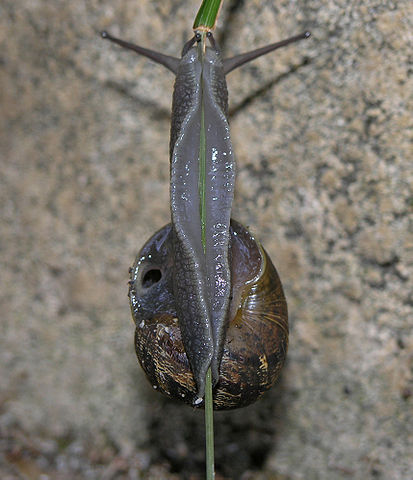Adaptation
Terrestrial snails have migrated from water to land and have had to make several adaptations to avoid desiccation.

Respiration: The original gill of a snail was
used to obtain oxygen from only water and not the air. Therefore the terrestrial snail has
reduced their gill to help them obtain oxygen from dry air (The
Living World of Mulluscs 2011).
The pneumostome or respiratory hole that acts as a lung for the snail
has also formed in the mantle cavity to enable air flow for the snail
(Hickman et al. 2009). It is important for terrestrial snail to keep
moisture in its mantle cavity to prevent evaporation which could lead to
death (The Living World of Mulluscs 2011).
Secretion: Terrestrial snails secrete a hygroscopic
slime that attracts water from its surroundings. This adaption has been
made by terrestrial snails to help prevent the loss of water and to help
them move easier (The Living World of Mulluscs
2011).
The secreted mucus also acts like glue when the snail is climbing up a
vertical branch or leaf (The Living World of
Mulluscs 2011).
Aestivate: Another way terrestrial snails stay moist is
to look for suitable conditions during a dry period. This method of
adaptation is called aestivating (The Living
World of Mulluscs 2011). Most snails dig into the ground or
cling onto plants that hold moisture. Terrestrial snails also close their shells with a mucous covering
for protection (The Living World of Mulluscs
2011).


On the right you can see the foot is contracted. This happens when the snail feels threatened or to help prevent desiccation.
Jumping: A terrestrial snail also loses water when it moves around so it has developed a technique called “jumping” (The Living World of Mulluscs 2011). When the snail “jumps” it only crawls on certain parts of its foot to prevent losing valuable amounts of water (The Living World of Mulluscs 2011).
Back to Nutrition Next Reproduction